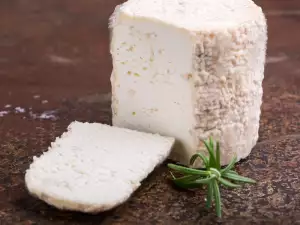Cream cheese is a creamy type of cow's cheese. It has a soft texture, ideal for spreading on slices of bread or for use in different dishes. It is distinguished by its pleasant, saturated milky and unobtrusive taste, as well as most soft cheese products, that cream cheese also belongs to.
Cream cheese is normally made according to a specialized process using cow milk and cream. Its production follows a proven classic technique, using cream with the addition of lactic acid bacteria starter culture.
In other cases, the raw material used to make this type of cheese is described as "high quality dairy products from cow's milk, " without being too concrete.
The roots of cream cheese can be traced centuries back to England, while today it's a popular product in the USA as well. Cream cheese is defined as a soft white cheese containing at least 33% milk fat and no more than 55% moisture.
Often it is sold in packets of 4 oz (120 g), 8 oz (226 g), as original taste or with various flavors added, such as garlic, herbs and spices, ham, olives and others. What makes it different from other cheeses is that it isn't aged and needs to be eaten as fresh as possible.

The manufacturing technique for cream cheese requires killing the lactic acid bacteria starter culture at just the right moment, otherwise the result will not be a soft and delicious cheese.
Often, cream cheese is stabilized with plant resins which prevents the release of water. Production of this cheese is quite complex because if coagulation is done too late, the cheese will liquefy instead of thickening.
History of Cream Cheese
Historical sources indicate the preparation of something similar to cream cheese as far back as 1583 in England and a bit later in 1651 in France. Recipes for cream cheese were recorded shortly after 1754, more specifically in parts of England (Lincolnshire), as well as the southwestern part of the country.
In the US, as well as worldwide, the most popular brand of cream cheese is Philadelphia, named after the city it was first created in. This type of cream cheese was first marketed in metal foil packaging in 1880 but there are accounts of an earlier precursor to this product. Some sources reveal that the first cream cheese made in the US was in New York in 1872.
Composition of Cream Cheese

Cream cheese is a tasty dairy product, with composition varying depending on brand. This cream aroma cheese usually has a moisture of between 52-68 % and a milk fat content of 18-32 %. 3.5 oz (100 g) of cream cheese contains 450-550 calories.
In the various kinds and brands of cream cheese we may find cottage cheese, cow cheese, cow butter, salt, stabilizer Е1422 and other additives in cheaper products. You may also come across cream cheese packages that have the following information for 100 g of product: 20 g fat, 15 g proteins, 2.5 g carbohydrates, 2.5 g salt, with a lower energy value of 250 calories / 1037 kJ.
In stores one may also find cream cheeses labelled "bio". Such a product contains: 53% cheese, 35% butter, 10% cottage cheese, dissolved salt, sodium citrate. Sometimes it's made from nonfat powdered milk, 24% cream, milk culture and salt. The dry substance there is between 20-40%, with 26-50% fat in it. The allergens contained in cream cheese are milk and lactose.
Choosing and Storing Cream Cheese
You'll find a myriad of cream cheese packaging and brands in stores - local and imported. This soft cheese is often sold in packets, round plastic containers or bars similar to the ones butter is sold in. Cream cheese at supermarkets needs to be stored at temperatures between 33.8°F - 41°F and up to 45 days.
Cream cheese can last for more than a month if stored properly but always check the expiration date on the package. For some other types, the shelf life may be half this - 15 days from the date of production.

Culinary Use of Cream Cheese
Cream cheese, due to its soft and delightful taste and consistency finds wide use in cooking - in salty dishes and sauces, as well as in some of our favorite cakes. Cream cheese is a main component of cheesecakes and other creamy desserts.
Cream cheese is excellent for breakfast, often to spread on bread slices, bruschetta, rusks and bagels. The taste of this product perfectly complements all sorts of herbs and spices, garlic, onions, vegetables (such as peppers for example). When it comes to sweet desserts and creams, the soft cheese pairs wonderfully with fruits, jams and even chocolate.
A bread slice with cream cheese spread and a thin piece of smoked salmon has the potential to bring you to gastronomic ecstasy. In Italy they have a slightly different approach when it comes to its taste combinations. In the land of spaghetti and mascarpone, chunks of cream cheese are put into salads. In Japan they make cream cheese out of soya milk and spread it on small rusks.



















Comments